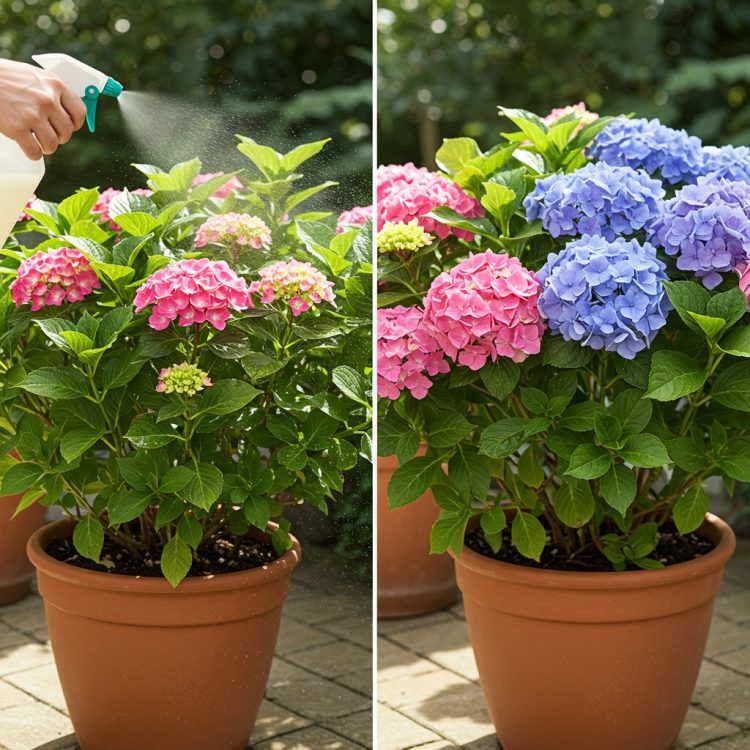For Potted and Indoor Plants:
Dissolve 1 teaspoon of magnesium sulfate in 1 liter of water.
Water your flowers at the root, ensuring the soil is already moist before application.
This method is particularly effective for houseplants such as geraniums, violets, and indoor hydrangeas.
Foliar Spray for Fast Absorption:
Dissolve 1 teaspoon of magnesium sulfate in 1 liter of water.
Pour the solution into a spray bottle and mist the leaves of your plants.
Be sure to spray in the evening or on a cloudy day to avoid leaf burns from direct sunlight.
Avoid spraying directly onto flowers, as this may cause damage to delicate petals.
Benefits of Magnesium Fertilization
By using magnesium sulfate as a fertilizer, you can expect numerous improvements in plant health and appearance. Some key benefits include:
Prevention of Chlorosis: Magnesium helps maintain a rich green color in leaves, preventing yellowing and discoloration.
Improved Nutrient Uptake: Plants absorb nutrients more efficiently when magnesium levels are balanced, leading to better overall health.
Stronger Root Systems: Healthy roots are essential for water and nutrient absorption, and magnesium plays a role in root development.
Accelerated Growth: With adequate magnesium, plants grow faster and produce more foliage.
Enhanced Flowering: Flowers bloom more abundantly and for longer periods when magnesium levels are optimal.
Increased Resistance to Stress: Plants with sufficient magnesium are better equipped to handle heat, drought, and other environmental stresses.
When to Apply Magnesium Fertilizer
The best time to provide magnesium to your plants is during the active growing season, which includes spring and summer. This is when plants require the most nutrients for vigorous growth and flowering. If you notice symptoms of magnesium deficiency, apply the fertilizer as soon as possible to correct the issue. For preventive maintenance, a monthly application should be sufficient.
Additional Tips for Plant Care
Monitor Soil pH: Magnesium is more available to plants when the soil pH is between 6.0 and 7.0. If your soil is too acidic or alkaline, consider adjusting it with the appropriate soil amendments.
Use Balanced Fertilization: While magnesium is crucial, it should be part of a well-rounded fertilization routine that includes nitrogen, phosphorus, and potassium.
Avoid Overwatering: Excessive watering can wash away nutrients from the soil, including magnesium. Ensure proper drainage to retain essential minerals.
Mulch for Nutrient Retention: Adding organic mulch around plants helps retain moisture and nutrients in the soil.
Conclusion
Magnesium sulfate is an easy and highly effective way to improve the health and flowering of your garden and houseplants. Whether you grow roses, hydrangeas, geraniums, or violets, this simple fertilizer can make a significant difference in their growth and appearance. By recognizing the signs of magnesium deficiency and applying the right fertilization techniques, you can enjoy lush, vibrant flowers all season long. Try adding magnesium sulfate to your plant care routine, and watch your flowers thrive like never before!
